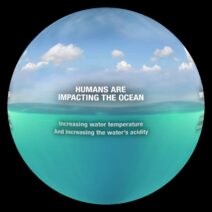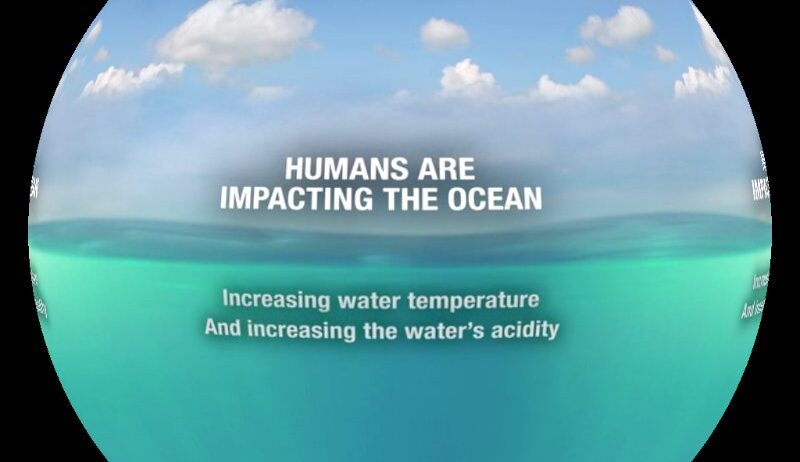As we navigate through the complexities of climate change, one might ponder a playful yet provocative question: “If the oceans could talk, would they sulk or sing?” The relationship between global warming and the carbon dioxide (CO2) levels in our oceans presents us with a profound challenge that requires rigorous exploration. Understanding this intricate interplay is critical, especially given its cascading effects on marine ecosystems, biodiversity, and global climate stability.
To start, it is essential to recognize the significant role the oceans play in regulating atmospheric CO2. The world’s oceans act as massive carbon sinks, absorbing approximately 30% of the CO2 emissions produced by human activities. As temperatures rise globally, a concerning phenomenon unfolds: the ability of oceans to absorb CO2 diminishes. Warmer waters hold less dissolved gas, leading to an increase in atmospheric CO2 levels. This becomes a dual-edged sword, as those very emissions are hastening the rise in ocean temperatures, creating a feedback loop that seems hard to escape.
Rising temperatures have various cascading impacts on ocean chemistry. The increased concentration of CO2 leads to ocean acidification—a process characterized by a decrease in seawater pH. This transformation profoundly affects marine organisms, particularly calcifying species such as corals, mollusks, and certain plankton, which rely on calcium carbonate to build their shells and skeletons. As the oceans become more acidic, these organisms face dire challenges, potentially threatening entire ecosystems and the myriad species that rely on them for survival.
To comprehend the implications of ocean acidification, one must consider the biological ramifications. Coral reefs, often dubbed the “rainforests of the sea,” are among the most affected. The symbiotic relationship between corals and zooxanthellae—tiny algae that provide food through photosynthesis—relies heavily on stable and healthy ocean conditions. As CO2 levels rise, the heightened acidity disrupts the availability of carbonate ions, which are essential for coral growth. The decline of coral reefs could not only jeopardize countless marine species that inhabit these biodiverse structures but also undermine the livelihoods of millions of people who depend on fishing and tourism linked to healthy coral ecosystems.
Moreover, the link between global warming and CO2 levels sets off another chain reaction in marine food webs. Phytoplankton, the foundation of the ocean food chain, thrive in stable conditions. However, changing temperatures and acidity levels can alter their distribution and productivity. Phytoplankton are integral to carbon cycling, as they absorb CO2 during photosynthesis. A decline in their populations could mean less carbon being sequestered, exacerbating atmospheric CO2 levels and contributing further to climate change.
Furthermore, the impact of rising CO2 levels extends beyond the immediate biological consequences; it permeates through economic and social frameworks. Coastal communities, often reliant on fishing industries, face economic instability as fish populations fluctuate due to changing marine conditions. Seafood resources may dwindle, leading to food insecurity and lost livelihoods. Hence, the repercussions of global warming and ocean acidification can infiltrate societal structures, igniting complex socio-economic challenges.
Addressing ocean acidification and the overarching impact of global warming on CO2 levels demands a multifaceted approach. Mitigation strategies must be employed at both local and global scales. Reducing carbon emissions remains paramount in slowing the rate of climate change and its associated effects on oceanic systems. Transitioning towards renewable energy sources, promoting sustainable fisheries, and implementing stronger regulations on pollutants are vital steps in this undertaking.
Additionally, conservation efforts aimed at protecting and restoring marine ecosystems can enhance resilience against the challenges posed by acidification. Initiatives that promote marine protected areas can help safeguard critical habitats and bolster biodiversity, providing a buffer against environmental changes. Educating surrounding communities about sustainable practices can foster a collective sense of responsibility towards ocean health.
Enhanced scientific understanding is also crucial. Ongoing research into the effects of climate change on marine ecosystems will enable us to anticipate and mitigate impacts more effectively. Innovative technologies and monitoring systems can equip scientists with vital data on ocean conditions, enabling the timely formulation of adaptive strategies.
In spite of the daunting challenges ahead, a glimmer of hope remains. Global awareness of climate change and its multifarious consequences has surged in recent years, catalyzing grassroots movements and desiring a collective action. Citizen engagement plays a pivotal role in advocating for policy changes that prioritize environmental health, urging governments to implement climate-smart practices. The oceans, as they grapple with the burdens imposed by human activities, beckon us to take responsibility and cultivate stewardship.
In conclusion, while the playful question of whether the oceans would sulk or sing may bring a smile, the grave realities of global warming and its effect on CO2 levels in our oceans require earnest contemplation and decisive action. The profound truth of acidification necessitates an urgent response, as we stand at the crossroads of potential devastation or hopeful restoration. It is our shared duty to ensure that the oceans sing in harmony, supporting life and resilience for generations to come.






